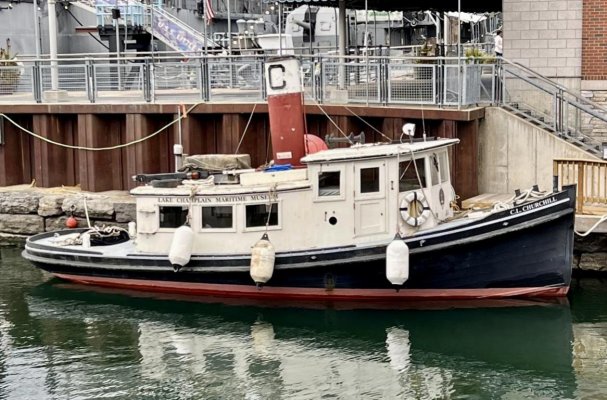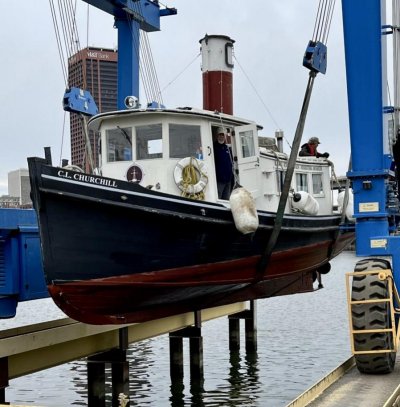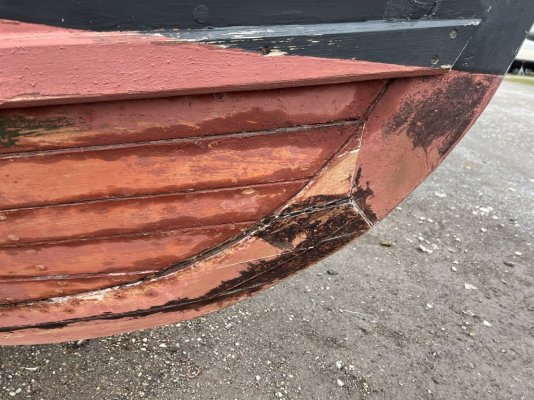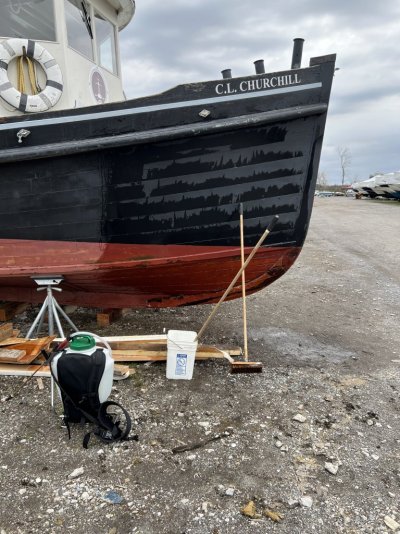iggstermanBMC
Member
This is a follow up to my original forum post on May 13th, 2023. With the help from members I was able to determine the age and engine specs of my Ford Industrial Engine. She is a model 590E, in line 6 cylinder Ford Industrial Diesel Engine producing 99hp at 2400rpm. Manufactured on December 1959.
Yes, the engine is older than the boat.
The organization that I belong to ( Buffalo Maritime Center ) bought the tugboat C L Churchill this past summer and brought her to Buffalo NY on a two week voyage down Lake Champlain to the Champlain Canal to the New York State Barge Canal arriving on October 30th at the Canalside on the Buffalo waterfront.
The engine power runs through a Paragon transmission Model HJ7C-L, a Paragon Reduction gear Model RC30-L.
The engine performance was good, only using 16oz. of oil every 2 days. The head gasket had just been replaced with no machining done to head or block.
At idle she smoked badly which made locking a choking experience.
So what now, rebuild a 64 year old engine, replace the engine, replace the engine and drive line completely.
Some thoughts from forum readers.
Yes, the engine is older than the boat.
The organization that I belong to ( Buffalo Maritime Center ) bought the tugboat C L Churchill this past summer and brought her to Buffalo NY on a two week voyage down Lake Champlain to the Champlain Canal to the New York State Barge Canal arriving on October 30th at the Canalside on the Buffalo waterfront.
The engine power runs through a Paragon transmission Model HJ7C-L, a Paragon Reduction gear Model RC30-L.
The engine performance was good, only using 16oz. of oil every 2 days. The head gasket had just been replaced with no machining done to head or block.
At idle she smoked badly which made locking a choking experience.
So what now, rebuild a 64 year old engine, replace the engine, replace the engine and drive line completely.
Some thoughts from forum readers.
Attachments
Last edited by a moderator:




